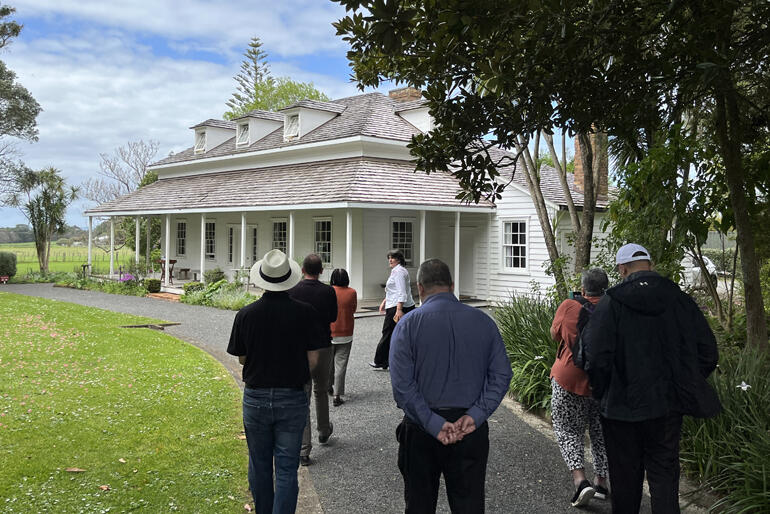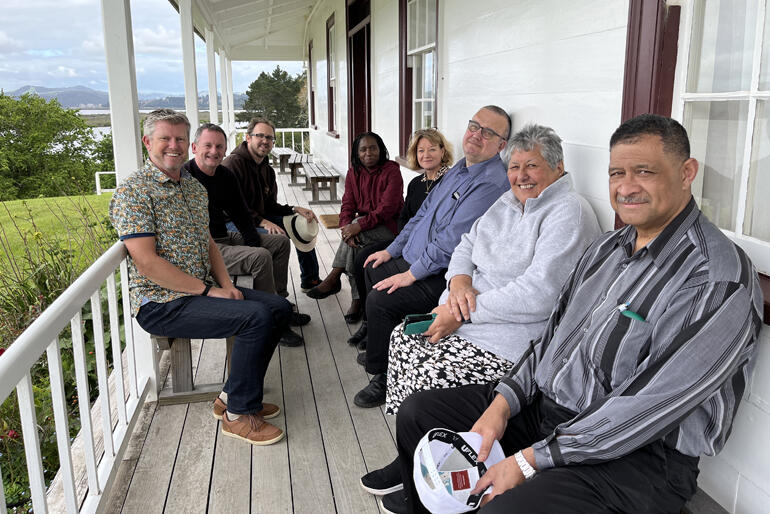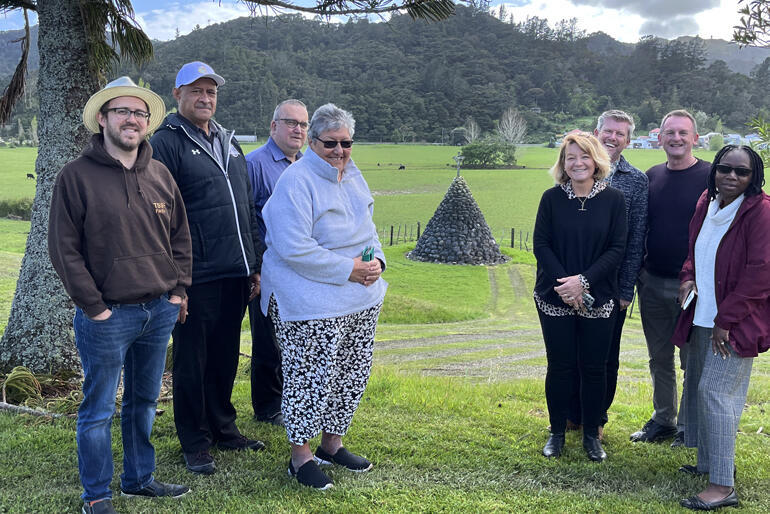


Eight members of the Anglican-Methodist Ecumenical Dialogue have travelled to the upper North Island in early October 2022 on a pilgrimage to places of significance for the two churches’ missionary beginnings in Aotearoa.
Methodists joining the pilgrimage were: Rev Tony Franklin Ross, Rev David Poultney, Rev Kimberley Chiwona and Rev Siosifa Pole, while Anglicans taking part were: Bishop Waitohiariki Quayle, Bishop Ross Bay, Dean Anne Mills and Rev Peter Bargh.
Anglican-Methodist dialogue Co-Chair, Bishop of Auckland Ross Bay said the pilgrimage had been a good way to look at how people from the two churches had worked so closely together in the past.
“It has been really good to understand the ways in which these early Missions worked collaboratively for the sake of the Gospel, rather than seeking to compete over whose church people should join.”
“We pray this spirit of friendship will continue to mark out the ongoing relationship between our two churches.”
Postponed till this year due to Covid pandemic limits, this month’s Northland visit arrived in time to greet the upcoming bicentennial of Rev Samuel Leigh’s arrival in Aotearoa from Sydney in 1822 – when he became the first Methodist (Wesleyan) missionary to settle in the country.
“Christianity in Aotearoa significantly relies on Anglican and Methodist missionary endeavours, and the collegial relationships between Anglican and Methodist missionary workers in the early days has remained a thread of connectedness linking our two churches.” said Methodist minister and Anglican-Methodist dialogue Co-Chair, Rev Tony Franklin-Ross.
Tony explained how the Anglican Mission at Rangihoua became the launching point for Rev Samuel Leigh, where he was hosted for some months by CMS missionaries William and Dinah Hall on his arrival in Aotearoa.
Rev Tony emphasised the strong collegial relationships between Wesleyan and Anglican missionaries and the significant contributions of Māori to the missions, without whose support the missions would not have been possible.
“As the history of these beginnings unfold, the missionary societies and the gospel are also interwoven in Te Tiriti, and continue to be expressed in the bicultural partnership of Te Hāhi Weteriana and the Tikanga of the Anglican Church.” said Tony Franklin-Ross.
The Anglican and Methodist pilgrims began their reflective visits in Kerikeri at Kemp House and the Stone Store, site of the Anglican mission station founded in 1819. The pilgrims then moved to the nearby Kororipo Pa, which sat on the edge of the lands of Ngāpuhi leader Hongi Hika who supported both Anglican and Methodist missions.
Next day the pilgrimage turned to Kaeo near Whangaroa where they visited the Methodist Centennial Church and the Memorial Stone Cairn that marks the site of Wesleydale, the first Methodist Mission in Aotearoa, established by WMS missionaries Samuel and Catherine Leigh and William White.
After hearing the early stories of Māori-Pākehā contact in Whangaroa Harbour, the group visited St Paul’s Anglican Church and the Boyd memorial, before heading inland to Te Waimate Anglican Mission (1830) and St John the Baptist Anglican Church (1831).
The day concluded at Mangungu Methodist Mission founded in 1828 by missionaries Rev John Hobbs and Rev James Stack, who later served as an Anglican clergyman and CMS missionary.
The dialogue team held end of the day prayers on the Mangungu Mission House veranda overlooking the Hokianga Harbour, recalling that both Te Waimate and Mangungu missions were locations where Māori leaders signed the Treaty of Waitangi in February 1840.
On the final morning of the pilgrimage, the team gathered at the Methodist-Presbyterian Union Church in Kerikeri to reflect on the insights of the previous two days. Rev Tony Franklin-Ross brought the pilgrimage to a close in an ecumenical service of Holy Communion.
“It was great to explore ‘From whence we came’, said Rev Tony.
“There are so many common threads, including the close relationships of Anglican Samuel Marsden and Wesleyan Samuel Leigh, and of Māori chief Hongi Hika.”
The dialogue team reflected on the privilege of visiting the places where Anglican and Methodist missions were first established in Aotearoa.
“We began together, with a sense of belonging and trust. These threads form a whanaungatanga, threads like the forming of a tukutuku panel.” said Tony Franklin-Ross.
He highlighted how the early relationship dynamics between the two churches had changed over following years.
“What would our contemporary engagement look like in light of this journey, and our covenant together as churches; where the calling is not to a denomination but to God’s service?” he asked.
“The early journeys of our forebears in faith, their mutuality and cooperation, will be a guide to building and extending our covenant relationships two centuries later.”

















Comments
Log in or create a user account to comment.